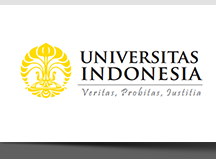Abstract
Mangroves play a vital role as bioindicator plants in port areas with the potential for non-essential heavy metal contamination. This study aimed to determine the potential for phytoremediation of lead heavy metal in mangrove vegetation resulting from port operations. The research was conducted in the mangrove ecosystem of Lembar Harbor, West Lombok Regency, West Nusa Tenggara, Indonesia. Substrate, leaf, and root samples were collected using a purposive random sampling technique and analysis for testing the lead heavy metal content using atomic absorption spectrophotometry. The results showed that the average heavy metal content of lead accumulated in the substrate in each mangrove stand (14.35 ± 2.711 ppm) was higher than the average heavy metal content in the roots (5.48 ± 2.300 ppm) and leaves (3.55 ± 1.623 ppm). Further analysis showed that nine out of 10 mangrove species act as a phytostabilizer against the lead heavy metal with an average translocation factor of no more than one (0.59 ± 0.176). Only Rhizophora stylosa showed the ability for phytoextraction with a translocation factor more than one (1.488). All types of mangroves in the Lembar Harbor area had a bioconcentration factor lower than one, with an average leaf bioconcentration factor of 0.25 ± 0.115 ppm and a root bioconcentration factor of 0.39 ± 0.161 ppm. The ecological function of the mangroves in Lembar Harbor is more specifically an excluder plant for lead heavy metal bioaccumulation with a biological concentration factor (BCF) < 1 and phytoremediation (FTD) < 1, which can be affected by the low accumulated BCF of leaves and roots.
Recommended Citation
Rahman/Firman, Firman Ali; Ihsan, Muhammad Shohibul; Agustini, Dwi; and Jayanti, Ervina Titi
(2025)
"Phytoremediation of Lead Heavy Metals in the Mangrove Ecosystem of the Lembar Harbor Area, West Lombok Regency, Indonesia,"
Makara Journal of Science: Vol. 29:
Iss.
2, Article 1.
DOI: 10.7454/mss.v29i2.2134
Available at:
https://scholarhub.ui.ac.id/science/vol29/iss2/1


